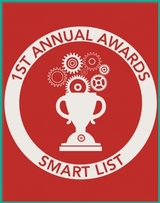
Students who are not aware of these technologies will certainly have a disadvantage in the job market when they grow up. It is vital to introduce technology now. It needs to become a way of life in the classroom.
In addition, the current statistics do not instill confidence. Despite 94% of teachers using computers for school email, only 67% used computers for instructional purposes. So, how can we get more technology into classrooms? This is where "Tech Challenges" come into play.
A tech challenge is exactly what it sounds like. It is the use of technology to accomplish a goal. Keller designed it to purposely change every month or so. Every participant will encounter something new. The
underlying principles of technology use might remain the same, but they will be asked to apply them in different ways.
Students participating in tech challenges are split into groups of four. Participants are asked to complete four tasks in four different areas, and these are data-driven, encouraged, science, and web 2.0. Originally the program began as teacher tech challenges, but has grown to include students as well.
There are rewards and badges for completing each task. The more tasks completed the better and more abundant the rewards.
How Do They Work?
As already mentioned, they incorporate a wide range of technologies. The advantage of these challenges is they all test different areas of a student's knowledge.
One such tech challenge involves creating an account on a platform called Big Huge Labs and making a motivational poster. Another involves a tool called Voki. It allows students and teachers to create
a character that talks. This character can work with students to improve their language skills.
Engaging Teachers - Why the Need?
It is often forgotten that teachers need as much motivation as students to indulge in new ways of bringing technology into the classroom.
Often, teachers alone have neither the time nor the resources to strike out on their own. They often do not have the support of their superiors to introduce new technologies. Some teachers do have this time, but this is more the exception than the norm.
Tech challenges help teachers get involved by liaising directly with principals. This initiative is endorsed by the participating schools, and teachers directly benefit from rewards as well. If you're interested, check out the Techformers Unite group, which posts weekly challenges for over 600 members to help expose them to new technology tools.
For example, one reward at Keller's school involves having Andrea Keller cover the teacher's class for 30 minutes. If teachers do all 4 tech challenges that month, they get a chance to be in a drawing for a one hour lunch.
Teachers are also given small rewards just for getting started. These small offerings do much to help convince teachers to test the program in their classrooms. For example, if teachers complete:
- 1 challenge - they are awarded a badge.
- 2 challenges - badge and swag.
- 3 challenges - badge, swag, and jeans pass.
- 4 challenges - badge, swag, jeans pass, and 30 minute class coverage
Introducing Students to a Passion for Technology
School curricula have been accused of not doing enough to make students passionate about technology. We know that it is an important part of the world today, but schools are still stuck in the past. They often
stick to using outdated teaching methods.
Tech challenges allow students to engage with technology that they have never seen before. Programs like Voki bring voice technology into the classroom. It can be used in a range of subjects, including
mathematics, IT, and science. Keller also created the Affinity game, where students can work through tech challenges at their own pace as well.
Why does it work so well?
It is such a simple idea and yet it could not be more different from what many students are used to. Pupils are not interested in the same tasks and worksheets that they are given day in and day out. Tech challenges offer something new that instantly peaks their interest.
Bringing it into the Classroom
All technology must have a purpose. Simply allocating tasks to students will not fulfill their educational objectives.
These tech challenges can be brought in as part of a special event. Schools have benefited from successful periods dedicated to programs like this in the past.
If this is not possible, tech challenges are still capable of being brought into the classroom and incorporated into normal lessons.
Let's go back to the Big Huge Labs challenge described above. It involves creating a poster. This is a common task that teachers tend to allocate pupils. They might design them using a Microsoft program or on plain old pen and paper. Why not use a tech challenge instead?
It does not have to compromise learning pathways, but it still accomplishes the goal of introducing new technologies and engaging both teachers and students.
So What Lasting Benefit Does this Initiative Have?
Tech challenges give students the chance to learn something new, outside of the boundaries of the traditional curriculum. The main benefit comes with the engagement factor. It is something students have never seen before, and this already means they are going to take note, even if only for a short time.
We also have to remember the effect it has on teachers. Teaching exactly the same lessons in exactly the same way grows stale. Even the most passionate educator is bound to grow tired. Tech challenges
enable them to communicate their lessons in a manner that engages their creativity and brings together a wide range of expertise.
By targeting both teachers and students, the tech challenge can become a resounding success in the classroom!
For more information, you can reach out to Andrea Keller on Twitter or check out her blog.
James Green is a researcher at Player FM, the podcast discovery app for Android and the web.












